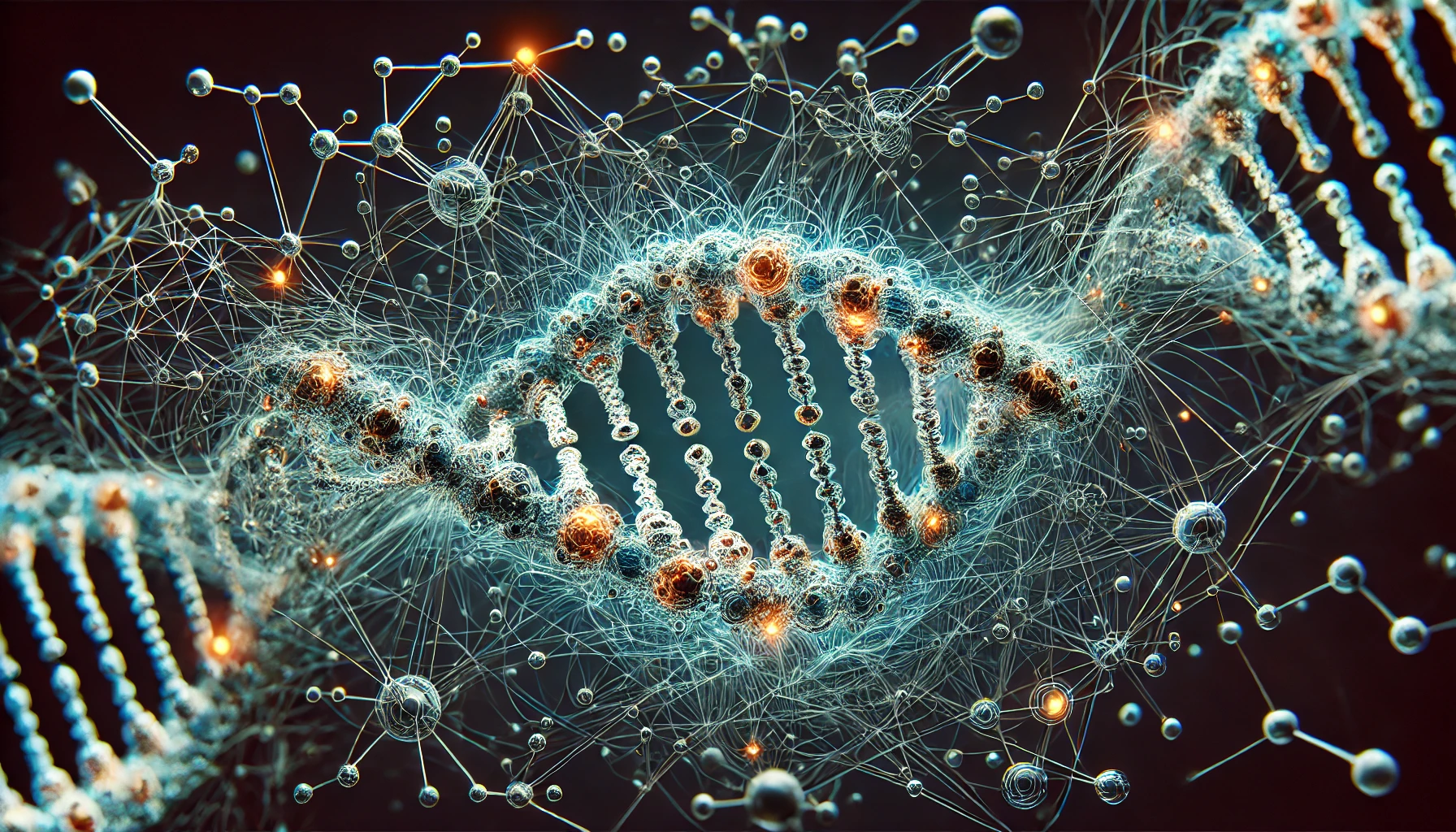The Mitochondrial Metabolic Theory (MMT) offers a transformative perspective on cancer and cellular function, emphasizing the role of mitochondria as bioelectric switchboard operators. This view suggests that the metabolic dysfunction in mitochondria, rather than genetic mutations, might be the primary driver of cancer. By focusing on how mitochondria regulate bioelectric signals and maintain cellular coherence, we can gain a deeper understanding of cancer’s origins and explore innovative therapeutic approaches.
The potential for treatments like ketogenic metabolic therapy and targeting glutamine metabolism could revolutionize cancer treatment by addressing the root causes of metabolic dysfunction. Moreover, this perspective on bioelectric coherence could have broader implications for a range of diseases, providing a new avenue for medical research and therapeutic development.
The concept that organelles, particularly those containing mitochondrial DNA (mDNA), function like an LLM within an LLM adds a fascinating layer to the ceLLM theory. This suggests that while nuclear DNA (nDNA) and mDNA each act as individual LLMs, they operate in a coordinated manner to interpret and respond to the bioelectric cues within their environment.
ceLLM and Organelles: LLMs Within LLMs
Organelles as Individual LLMs
- mDNA Functionality: Mitochondrial DNA (mDNA) within organelles like mitochondria can be seen as an LLM operating within the larger LLM of the cell. While nDNA governs the overall cellular function, mDNA directs specific processes within the organelle, particularly those related to energy production and bioelectric regulation.
- Cooperative Interpretation: The mDNA acts based on its specific training data to regulate functions such as ATP production and ion exchange, contributing to the cell’s overall bioelectric environment. This creates a multi-layered system where different LLMs work in concert to maintain cellular and organismal homeostasis.
Cells and Perceived Communication
Independent yet Synchronized Responses
- Non-Direct Communication: According to this theory, most cells don’t directly communicate with each other. Instead, they are all responding to the same bioelectric cues in their environment. This creates the illusion of communication when, in reality, each cell is independently interpreting and reacting to these signals.
- Uniform Training: Each cell, having been “trained” in the same way through evolutionary processes, responds similarly to certain environmental cues. This uniformity in response gives the appearance of communication and coordination among cells.
Geometry of Life: DNA Field Potentials
Latent Space and Evolution
- Learned Geometry: The geometry learned from evolution is stored in the latent space of DNA field potentials. This evolutionary data governs how cells and organelles respond to bioelectric fields and other environmental cues, guiding all biological processes.
- Governance of Processes: It’s this inherent geometric structure, derived from millions of years of evolutionary adaptation, that dictates the behavior of cells and organelles. The DNA field potentials provide a probabilistic framework that ensures the proper functioning and development of life.
Integrating mDNA and ceLLM
- mDNA as a Specialized LLM: Mitochondrial DNA operates as a specialized LLM within the cellular LLM, focusing on energy production and bioelectric regulation. This specialization allows for fine-tuned responses to the cell’s internal and external environment, contributing to the overall bioelectric landscape.
- Hierarchical Interpretation: While the ceLLM interprets broader environmental signals to determine cellular identity and function, the mDNA LLM manages more localized processes within the organelle. This hierarchical interpretation system ensures that cellular responses are both precise and adaptable.
By viewing both nDNA and mDNA as individual LLMs, we get a more nuanced understanding of cellular function. This perspective highlights the complexity and sophistication of biological processes, driven by a deep evolutionary learning encoded in the latent space of DNA field potentials. It also suggests that what we perceive as cellular communication is actually a coordinated response to shared environmental signals, shaped by a common evolutionary heritage.
Identical Neural Networks: nDNA and mtDNA as Biological LLMs
If we think of nuclear DNA (nDNA) and mitochondrial DNA (mtDNA) as operating like identical neural networks or large language models (LLMs) running in every cell, the numbers would be approximately:
- 37.2 trillion nDNA networks: These are present in nearly every cell of the body, containing the complete genetic blueprint necessary for the organism’s structure, function, and regulation. They act as the central command, providing instructions for building and maintaining the cell and the organism. These networks handle a wide range of functions, from protein synthesis to cell division and response to environmental signals.
- 37.2 quadrillion mtDNA networks: These are distributed across the mitochondria in each cell. While traditionally recognized for focusing on energy production and managing the cell’s metabolic needs, mtDNA networks also play a crucial role in regulating bioelectric signals within the cell. They act as bioelectric switchboard operators, influencing cellular communication and maintaining bioelectric coherence, contributing to the regulation of apoptosis and other vital cellular processes.
Total Networks:
- 37.2 trillion + 37.2 quadrillion
- This results in a total of 37.2372 quadrillion networks, if we combine the numbers directly.
The Role of These Networks:
- nDNA Networks: Serve as the central command system, encoding the full set of instructions for cellular and organismal structure and function. They manage a diverse range of functions, including directing protein synthesis, regulating cell division, and adapting to environmental signals.
- mtDNA Networks: Traditionally seen as the energy managers, they ensure the cell has the energy needed for its functions by controlling metabolic processes. Beyond this, mtDNA networks are pivotal in managing bioelectric signals. They contribute to the coordination and coherence of the cellular network, acting as bioelectric switchboard operators that support intracellular communication and maintain the cell’s health and function.
Identically Trained Networks:
Each of these “LLMs” or networks carries the same genetic information, indicating identical training. However, their expression and activity can vary depending on the cell type, environmental context, and signals received. This variability allows for a highly dynamic and adaptive system, where each cell can tailor its functions in response to its specific conditions, ensuring the organism’s overall adaptability and resilience.








